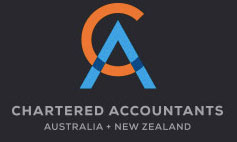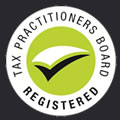12 February 2020
Wondering if you’re eligible to claim the CGT concessions can be settled by answering a few basic questions.
In addition to the capital gains tax (CGT) exemptions and rollovers available more widely, there are four additional concessions that allow a small business to disregard or defer some or all of a capital gain from an active asset used in the business:
- 50% active asset reduction – where you can reduce the capital gain on an active asset by 50% (in addition to the general 50% discount if you’ve owned it for 12 months or more, except for companies).
- Retirement exemption – capital gains from the sale of active assets are exempt up to a lifetime limit of $500,000. If you’re under 55, the exempt amount must be paid into a complying super fund or a retirement savings account.
- 15-year exemption – if your business has continuously owned an active asset for 15 years and you’re aged 55 or over and are retiring or permanently incapacitated, you won’t have an assessable capital gain when you sell the asset.
- Rollover – if you sell an “active” asset, you can defer all or part of a capital gain for two years, or for longer if you acquire a replacement asset or incur expenditure on making capital improvements to an existing asset.
The threshold tests
These concessions are available when you dispose of an active asset and any of the following apply:
- you’re a small business with an aggregated annual turnover of less than $2 million
- your asset was used in a closely connected small business
- you have net assets of no more than $6 million (excluding personal use assets such as your home, to the extent that it has not been used to produce income).
To start with, answer these questions
Many aspects of applying the CGT small business concessions can still create confusion for many small business owners – especially as no taxpayer needs to deal with them on a regular basis. They can be, as someone once put it, like taking a trek through the bush and never being able to find the same path twice.
There are however a small set of basic questions that should always be asked in order to get your bearings right from the start, and which should then enable us to help you to navigate the complex and intricate paths of the concessions more easily.
These questions are:
- what is the asset on which a capital gain has accrued?
- who owns the asset on which the capital gain is made?
- what is the “CGT event” (more below) involved?
(A CGT event, simply put, is a defined transaction that may result in a capital gain or loss — the simplest such transaction is selling an asset, but there is also shares becoming worthless if a company fails, for example, or the creation of contractual rights, and more.)
Why the above three questions? It is important to have these basics answered in the first place so that the sometimes unforeseen complexities of this key, and at times lucrative, area of small business tax concessions can be better applied.
Asset on which a capital gain has accrued
To start with, let’s look at the first — what is the asset on which a capital gain has accrued? This is important because:
- the asset must be an “active asset” to be eligible for the CGT small business concessions (which usually means that it must be used, or held ready for use, in the course of carrying on the business);
- an active asset can include shares and trust interests where specific conditions are met; and
- certain CGT assets are not eligible for the small business concessions (for example, assets whose main use is to derive rent).
Taxpayer who made the gain
The second question — who owns the asset on which the capital gain is made — is important in order to determine the “connected entities” and “affiliates” of the taxpayer. This needs to be ascertained because:
- an asset of the taxpayer that is used in a business carried on by a “connected entity” and/or an “affiliate” can also qualify for the CGT small business concessions;
- whether a taxpayer meets the “small business threshold” tests (that is, $6 million maximum net asset value or $2 million annual turnover), as the turnovers or net assets of “affiliates” and “connected entities” are taken into account for these purposes; and
- legal personal representatives, beneficiaries and surviving spouses and joint tenants can qualify for the small business concessions for a CGT asset owned by a deceased taxpayer if certain conditions are met.
The relevant CGT event
As to the last (what is the CGT event involved?), this is important because:
- the concessions are not available for capital gains arising under all CGT events ( eg under CGT event K7 where a capital gain arises from the partial non-business use of an asset);
- some of the concessions are not available for capital gains arising after certain rollover come to an end (for example, the 15 year exemption is not available for gains “reinstated” under the small business roll-over ); and
- a capital gain arising under CGT event D1 (ie when creating contractual or other rights) has additional conditions to be met.
Ask the right questions!
As you can see, when considering whether the valuable small business CGT concessions are available for your own business, settling a few basic questions first will give a clear indication (before you put in the effort) about whether or not you are in a position to pursue them. Having answered them will put you on the right track from the start to more readily and effectively apply the concessions to a specific situation.




